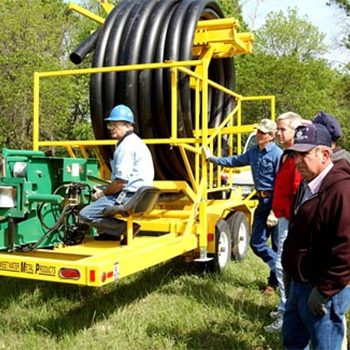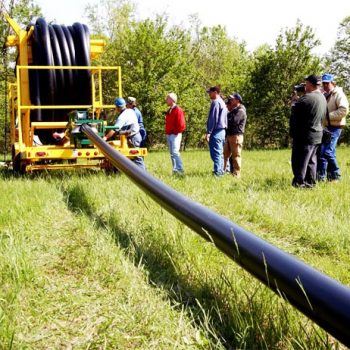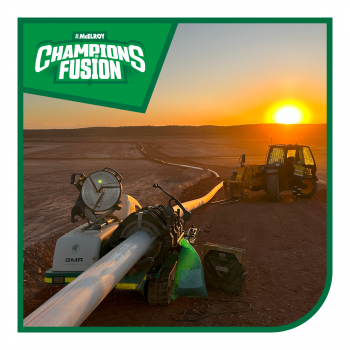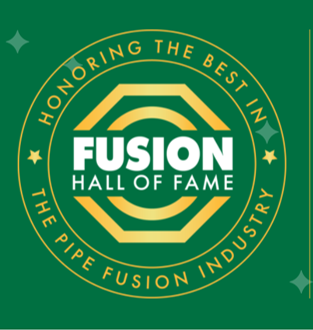Tulsa, Oklahoma — Since the late 1990’s coiled polyethylene (PE) pipe has literally rolled across the country to form a large part of the telecommunications pipeline infrastructure. The glut of benefits that make coiled pipe appealing to the telecommunications industry also make it ideal for a broad variety of applications such as water distribution, natural gas distribution, mining operations, sewers, waste disposal, and drainage lines. Speed of construction is its primary advantage over other pipes and contractors across the pipeline industry are pushing pipe installation to new limits.
In 1994 a pilot program by the Public Service Electric and Gas Company (PSE&G) resulted in the savings of $2/foot using coiled 4″ PE pipe vs. using butt-welded 20 and 40-foot sections. With this success, the company also pioneered the use of coiled 6″ PE pipe with even more dramatic savings. A technology assessment report by the Institute of Gas Technology in the same year found similar results using 4″ and 6″ coils. The total impact upon the US market in 1994 was estimated to be about $40 million dollars in savings to US natural gas distributors.
The LineTamer is simple to use
These results are steadily increasing today. The savings to installation costs is directly tied to time. Large-diameter pipe in 250-1000 foot rolls require less time to uncoil than organizing and un-stacking pallets of pipe sections. A smaller staging area is needed to handle coils as compared to sections. Perhaps the largest reduction of time comes from the decrease in butt fusion joints. These time factors also result in customers being less inconvenienced.
About the only disadvantage of coiled pipe is that it must be re-rounded because it ‘ovals’ and has to be straightened off the roll. McElroy Manufacturing, Inc. has resolved this problem with the LineTamer. The LineTamer re-rounds coiled pipe to meet or exceed ASTM D 2513 ‘ovality’ requirements. It also removes the coil set, by forcing it through a system of hydraulically powered rollers. PE, conduit and duct are safely straightened and installed in about a fourth of the time it takes to utilize straight lengths of pipe. One rural water contractor in Oklahoma says he saves four days of labor for every mile of pipe he lays.
“The LineTamer is simple to use,” said Terry Silkey, Training & Development Manager for MMI. “The machine is so simplistic a person with a minimal amount of training can quickly become an efficient operator.” McElroy offers training in the field or at their fusion training facility in Tulsa Oklahoma.
At this time about 50% of 3″ pipe sold is coiled. The percentages drop to about 15% for 4″ and as low as 5% for 6″. “We keep the option of using coiled pipe in front of our customers,” said Drew Oelson of Performance Pipe, a division of Chevron Phillips Chemical Company. “We discuss the economic benefits with them and that plays the largest role in the pipe being chosen for projects.”
As more and more people get educated about the cost savings of coiled pipe, especially in municipalities, the use of it will continue to grow.



